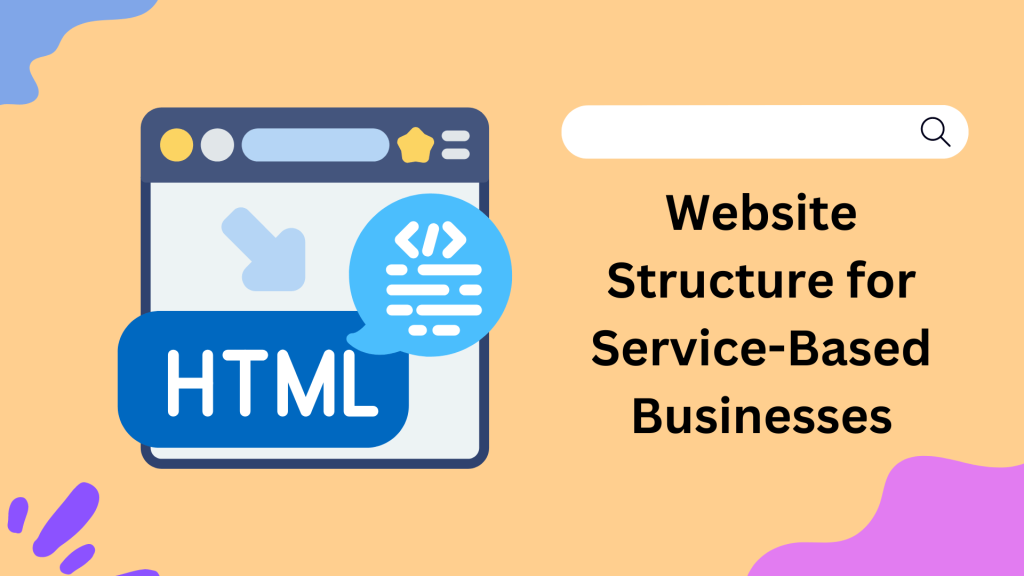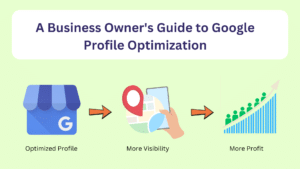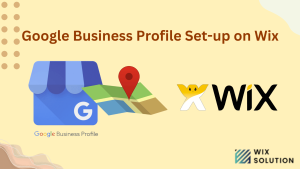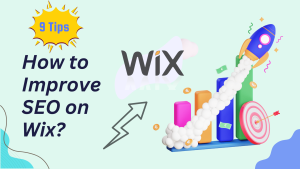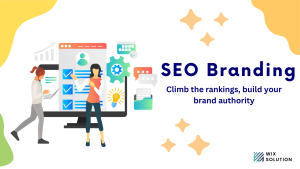Creating a well-structured website is crucial for any service-based business. A strong, organized site not only makes a great first impression but also helps convert visitors into customers. That’s why your website needs to be clear, user-friendly, and easy to navigate.
In this guide, we’ll walk you through the ideal website structure for a service-based business. You’ll learn about essential pages like the homepage, about page, services page, testimonials, contact page, and other key sections that are vital for your business’s success.
Let’s get started!
Table of Contents
ToggleWhat is website structure?
Website structure is how your site’s pages are arranged and linked. A simple structure helps visitors find information easily and improves your search engine rankings. For service-based businesses, a clear structure guides people from your homepage to your services and contact page, making it easier for them to become customers.

Why Is Your Website Structure Important?
Your website structure is important because it directly affects how visitors experience your site. A clear structure helps people find the information they need quickly, making them more likely to stay on your site and become customers. It also helps search engines understand and rank your website, which can lead to more traffic.
For service-based businesses, a good structure ensures that potential customers can easily discover your services and contact you, increasing the chances of turning visitors into clients.
Important Pages of a Service-Based Business Website
Having the right pages on your website is crucial. Each page serves a specific purpose and helps guide users through their journey on your site.
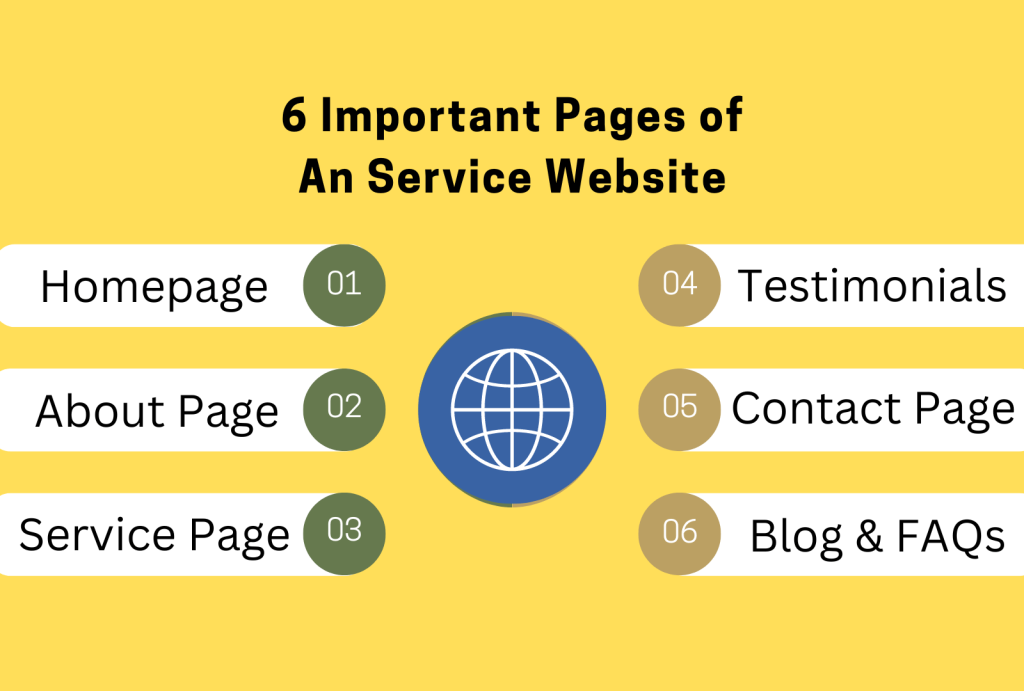
Here are the important pages every service-based business website should have:
- Homepage: The main entry point that highlights your brand and services.
- About Page: This page shares your story, mission, and values, helping build a personal connection with visitors.
- Services Page: A detailed overview of the services you offer.
- Testimonials Page: Showcase reviews and feedback from satisfied clients, building trust and credibility for your business.
- Contact Page: Provides your contact information and a simple form for inquiries
- Blog (Optional): A space to share helpful articles and updates that can attract more visitors and improve your SEO.
- FAQs Page (Optional): This page answers common questions about your services, helping to reduce inquiries and improve customer understanding.
Detailed Structure of Each Page
Each page should have a clear layout that helps visitors find information easily. Below, we’ll outline the common elements for each important page, ensuring your website is functional and inviting.
1. HomePage Structure
Creating an effective homepage is essential for making a strong first impression and guiding visitors through your website. Here’s a comprehensive guide on what to include:
➢ Mention Clear Branding
✦ Logo, Business Name, and Tagline: Your homepage should immediately establish your brand identity. This includes prominently displaying your logo, business name, and a catchy tagline that encapsulates what your business stands for.
➢ Navigation Menu
✦ Simple and Intuitive: Your navigation menu should be easy to use, helping visitors quickly find the most important sections of your site. Keep it straightforward to enhance user experience.
➢ Above-the-Fold Content
✦ Compelling Headline: Start with a strong, attention-grabbing headline that answers the essential question, “What does your company do?” The headline should be concise, clear, and describe your core service or product.
✦ Example: “Transform Your Space with Expert Home Remodeling – From Vision to Reality”
✦ Why It’s Perfect:
- Clear: Tells visitors exactly what you do—home remodeling.
- Value-Driven: Highlights the benefit of your service—transforming their space.
- Engaging: Connects with visitors’ desires to turn their dream home into reality.
- Action-Oriented: Encourages them to learn more by hinting at your comprehensive service.
✦ Sub-headline: A brief description that complements the headline, offering a snapshot of what you do or offer.
✦ Primary Calls-to-Action (CTA): Include clear and visible CTAs, such as “Get Started” or “Contact Us,” to guide visitors toward taking the next step.
➢ Supporting Image or Video
✦ Visual Representation: Use high-quality images or videos that align with your brand and services, helping to visually engage your visitors right from the start.
➢ Featured Content
✦ Highlight Key Services or Products: This section should showcase the most important services, products, or promotions you want visitors to notice.
➢ Benefits List
✦ What Makes You Special: It’s not enough to explain what you do; you must also differentiate yourself from competitors. Use a benefits list to highlight your unique selling points.
➢ Social Proof
✦ Testimonials or Reviews: Include social proof such as customer testimonials or reviews to build trust and credibility with new visitors.
➢ Content Offer or Promotional Offer
✦ Lead Generation: Feature a valuable offer like a whitepaper, ebook, or free consultation to generate leads. This section is also great for building your email subscriber list.
➢ Secondary Calls-to-Action
✦ Provide Additional Options: For visitors who aren’t ready to take your primary offer, include secondary CTAs like “Learn More” or “View Our Portfolio.” Place your primary CTA above the fold and secondary CTAs further down for those who scroll.
➢ Contact Information
✦ Easy Access: Make it simple for visitors to reach you by including your phone number, email, or a contact form.
➢ Footer with Links
✦ Essential Information: Your footer should include links to important pages like your privacy policy, terms of service, and social media profiles, providing visitors with easy access to additional resources.
2. About Page Structure
An ideal About Page should be engaging and informative, meeting the needs of different visitors. Here’s a simple structure to follow, along with some tips to make it even better:
➢ Compelling Intro: Address Visitors Directly
✦ Start with a short and welcoming introduction that addresses the reader and speaks directly to them.
✦ Use a friendly and conversational tone to establish a connection.
✦ Briefly mention who you are and what your site/business is about, making the visitor feel that they are in the right place.
Tip: This first impression matters. You can include a tagline or mission statement to capture attention quickly.
➢ Overview Section (Answer Key Questions)
Provide a brief overview that answers the following questions:
✦ Who is behind this business?
Mention the founders, team, or key people involved in the business.
✦ Why did they start this company?
Share the origin story of your company in a way that resonates with your audience.
✦ What do these people believe?
Highlight your company’s core values and beliefs and how they influence the brand.
✦ What problem do they solve, and how?
Explain the main problem your business addresses, with a focus on the solutions you offer.
✦ What do they sound like?
Define your brand’s voice—are you formal, casual, fun, or authoritative?
✦ What is their vision?
Describe your long-term goals and the future you’re aiming to create for your users.
✦ Where is this business?
Include your physical location if relevant, or mention if you’re a remote-first company.
Tip: Keep this section concise but clear. Visitors should quickly understand who you are and what you stand for.
➢ Visuals & Storytelling
✦ Use visuals to support the story: Pictures of the founders, the team, or the workplace humanize your brand. A short video introducing your team or sharing the company’s backstory can add a dynamic element.
✦ Testimonials: If applicable, add a few testimonials or quotes from happy clients, customers, or collaborators to build credibility.
Tip: Ensure the visuals are professional and align with your brand’s identity. A balance of text and imagery keeps the page engaging.
➢ Call-to-Actions (CTAs)
End the page with clear next steps. Whether it’s encouraging users to explore your products, read your blog, or contact you, have CTAs strategically placed throughout the page.
Tip: Don’t overwhelm users with too many CTAs. Instead, guide them based on their likely interests (e.g., “Work with Us” for collaborators, “Learn More About Our Services” for new users).
➢ Contact Information & Social Proof
✦ Contact Information: Make it easy for visitors to get in touch with you through a contact form or email address.
✦ Social Links: Provide links to your social media profiles so visitors can follow your updates and engage with your community.
✦ Press & Media Mentions: If applicable, feature logos or mentions of your company from notable publications or platforms to build trust.
Tip: Ensure your contact details and social links are visible and accessible throughout the page.
3. Service Overview Page Structure
A Service Overview page gives a clear summary of the services you offer, highlighting key benefits and why clients should choose you. It should be easy to navigate, with concise descriptions and strong calls to action, helping visitors quickly understand how your services address their needs.
Here is the ideal structure of the service overview page:
➢ Headline
✦ Goal: Capture attention and clearly convey the core value of your services.
✦ Example: “Comprehensive Digital Marketing Services to Accelerate Your Business Growth”
➢ Introduction:
✦ Goal: Briefly summarize your company’s mission and how your services help solve key customer problems. Highlight the overall benefit of your offerings
✦ Example: “Our expert team provides a full range of digital marketing services tailored to help businesses increase visibility, attract more customers, and boost revenue. Whether you’re looking to enhance your online presence or drive conversions, we have the right solution.”
➢ Service Categories (List Key Services)
✦ Goal: Provide an organized list of your main services. Include a brief explanation of what each service is and why it’s valuable.
✦ Example Layout:
- Service 1 (SEO Optimization):
“Rank higher on search engines and drive organic traffic with tailored SEO strategies that get measurable results.” - Service 2 (Social Media Marketing):
“Build brand awareness and engage your audience through targeted social media campaigns that create meaningful connections.” - Service 3 (PPC Advertising):
“Maximize ROI with data-driven, targeted ad campaigns that turn clicks into conversions.” - Service 4 (Web Development):
“Design and develop responsive, user-friendly websites that convert visitors into customers.” - Service 5 (Content Marketing):
“Position your brand as an industry leader with high-quality content that educates and inspires your audience.”
➢ Feature Highlights (Optional):
✦ Goal: Highlight any special features, awards, or recognitions that set your services apart.
✦ Example: “Our team is certified in Google Ads and Facebook Blueprint, ensuring you get the highest level of expertise.”
➢ Process Overview (Optional):
✦ Goal: Explain your general process for delivering services. Keep it high-level, offering transparency without going into the specifics of each service.
✦ Example:
- Consultation: Understand your business goals.
- Strategy Development: Craft tailored solutions.
- Execution: Implement services with a focus on measurable results.
- Reporting & Optimization: Monitor progress and refine strategies for ongoing success.
➢ Client Testimonials/Case Studies (Optional):
✦ Goal: Provide social proof that highlights the success of your services.
✦ Example: “‘Their SEO strategies helped us rank on page 1 of Google within three months!’ – Sarah, CEO of XYZ Corp.”
➢ Call-to-Action (CTA):
✦ Goal: Drive visitors toward the next step, whether it’s learning more about individual services, ✦ scheduling a consultation, or getting in touch.
✦ Example: “Explore our individual services or contact us to see how we can help your business grow.”
➢ Visual Elements (Optional):
✦ Goal: Add relevant visuals like icons, infographics, or videos to make the page more engaging.
✦ Example: Icons for each service (e.g., magnifying glass for SEO, bullseye for PPC, etc.).
4. Single Service Page Structure
A Single Service Page focuses on a specific service, like SEO Optimization. Let’s know about generalized service page suggestions.
➢ Headline
✦ Goal: Clearly state the service being offered and its primary benefit.
✦ Example: “SEO Optimization: Boost Your Website’s Search Engine Rankings”
➢ Introduction
✦ Goal: Provide a high-level overview of the service, its importance, and what customers can expect.
✦ Example: “Our SEO Optimization service is designed to increase your website’s visibility on search engines like Google. By targeting high-value keywords and improving your site’s technical performance, we help you attract more qualified traffic and convert visitors into loyal customers.”
➢ Key Benefits:
✦ Goal: Highlight the specific outcomes or results clients can expect from using this service. Focus on what makes your SEO approach unique.
✦ Example:
- Increased Organic Traffic: “Our data-driven strategies help you rank higher in search results, driving more visitors to your website.”
- Improved User Experience: “Optimizing site speed, mobile-friendliness, and content ensures visitors stay longer and engage more with your brand.”
- Higher Conversion Rates: “Better rankings and targeted content lead to increased conversions and business growth.”
- Long-Term Success: “We focus on sustainable SEO practices that provide long-lasting results.”
➢ Service Process:
✦ Goal: Provide a step-by-step explanation of how the service is delivered, giving clients an understanding of the workflow and timelines.
✦ Example:
- Comprehensive SEO Audit: We analyze your current site performance, identify weaknesses, and create a roadmap for improvement.
- Keyword Research & Strategy: We find the most relevant, high-value keywords that align with your target audience’s search intent.
- On-Page Optimization: We optimize your site’s content, meta tags, and structure for better search visibility.
- Technical SEO Fixes: We address issues like slow page speeds, mobile usability, and crawlability.
- Content Development: We create or optimize existing content to ensure it’s valuable, engaging, and SEO-friendly.
- Link Building: We acquire high-quality backlinks from authoritative sources to boost your domain authority.
- Performance Tracking: We provide ongoing monitoring and reporting to ensure continuous improvements.
➢ Deliverables (Optional):
✦ Goal: List the concrete outputs or deliverables clients will receive.
✦ Example:
- Monthly SEO Report: “Get a detailed report showing keyword rankings, traffic growth, and other key metrics.”
- Keyword Strategy Document: “A customized keyword list with search volume and ranking difficulty.”
- On-Page Optimization Checklist: “A complete checklist of optimized site elements, including meta tags, URLs, and internal linking.”
➢ Pricing (Optional):
✦ Goal: Provide clear pricing details or information on how to get a custom quote.
✦ Example: “Our SEO services start at $500/month. Contact us for a custom quote based on your business needs.”
➢ Social Proof (Testimonials/Case Studies):
✦ Goal: Build trust by showcasing how this service has benefited other clients.
✦ Example:
“‘We saw a 40% increase in organic traffic within the first six months of working with [Your Company Name].’ – John, Marketing Director at ABC Company.”
➢ Frequently Asked Questions (Optional):
✦ Answer common questions related to the service to address any concerns or objections.
✦ Example:
- How long does SEO take to see results?
“SEO is a long-term strategy. Most clients see significant improvements within 3-6 months.” - Do you offer local SEO?
“Yes, we specialize in local SEO to help businesses attract nearby customers.”
➢ Call-to-Action (CTA):
✦ Goal: Encourage users to take action, such as scheduling a consultation or requesting a quote.
✦ Example: “Ready to boost your rankings? Contact us today for a free SEO audit and consultation.”
➢ Visual Elements (Optional):
✦ Goal: Include relevant images, infographics, or diagrams to illustrate concepts like keyword research, link-building strategies, or SEO rankings over time.
5. Testimonials Page Structure
➢ Header Section
✦ Headline: A strong, trust-building headline like “What Our Clients Say” or “Customer Success Stories”.
✦ Subheading: A short description emphasizing the importance of reviews and feedback, e.g., “See how our product/service has helped customers succeed.”
➢ Introduction/Overview
✦ Brief Overview: A few sentences introducing the type of customers you serve and highlighting your company’s key values or results.
✦ Call to Action (CTA): A CTA near the top, such as “Join thousands of happy customers” with a button to sign up or learn more
➢ Featured Testimonials (Hero Section)
✦ Video Testimonial (optional): A video from a prominent customer or client discussing their positive experience.
✦ Customer Photo: Visual proof is key to authenticity. Include client pictures or their company logos.
✦ Name & Title: Full names, job titles, and company name (if relevant).
✦ Rating/Review Text: If you use a star or numerical rating system, display their feedback prominently with clear ratings.
✦ Callout: Highlight specific aspects of the product/service they loved (e.g., “Great customer support”, “Improved productivity by 30%”).
✦ Testimonial Style: Can be presented in blocks or as a carousel/slider for easy browsing.
➢ Call-to-Action (CTA):
✦ Encourage Conversions: After showing social proof, invite visitors to take action with a strong CTA (e.g., “Start Your Free Trial”, “Get a Quote”, “Join Us Today”).
✦ CTA Button: Make this button bold and stand out.
6. Contact Us Page Structure
➢ Page Header
✦ Headline: A clear title like “Get in Touch” or “Contact Us”.
✦ Subheading: A brief, welcoming message that encourages visitors to reach out (e.g., “We’d love to hear from you!”).
➢ Contact Form
- Fields to Include:
- Name (required)
- Email Address (required)
- Phone Number (optional)
- Message/Inquiry (required)
- Submit Button: Clearly labeled (e.g., “Send Message” or “Request a Callback”).
➢ Contact Information
✦ Phone Number: Include a clickable link for mobile users.
✦ Email Address: Use a professional email (e.g., [email protected]).
✦ Physical Address: If applicable, provide a complete address and consider linking to a Google Map for directions.
✦ Business Hours: Specify the hours when you are available to contact us.
➢ Social Media Links
✦ Include icons linking to your social media profiles (e.g., Facebook, Twitter, LinkedIn) for additional contact options.
➢ Additional Contact Methods (Optional)
✦ Live Chat: If available, mention live chat options and their availability.
✦ FAQs Link: Direct users to a FAQs page if they have common inquiries.
➢ Customer Support Options (Optional)
✦ Provide information on any support resources, like a knowledge base or community forum, if applicable.
➢ Call-to-Action (CTA):
✦ Encourage visitors to reach out or provide a reason to contact you (e.g., “Have a question? We’re here to help!”).
✦ Include a secondary CTA, like signing up for a newsletter or scheduling a consultation.
7. Blog Page Structure
➢ Page Header
✦ Title: A clear title like “Blog” or “Insights”.
✦ Subheading: A brief introduction to what visitors can expect (e.g., “Explore our latest articles on industry trends, tips, and insights”).
➢ Search Bar
✦ Allow visitors to easily search for specific topics or keywords within the blog.
➢ Featured Posts Section
✦ Highlight a few key or popular posts at the top with images, titles, brief descriptions, and read more links.
➢ Blog Post List
- Post Preview Layout:
- Thumbnail Image: Relevant image for each post.
- Post Title: Clickable link to the full post.
- Date Published: To provide context on the recency of the content.
- Author Name: A link to the author’s profile, if applicable.
- Excerpt: A brief summary or introduction to the post.
- Read More Button: Clear call-to-action to encourage click
➢ Categories/Tags
✦ List of categories or tags to help visitors filter content based on their interests (e.g., Marketing Tips, Industry News, Case Studies).
➢ Sidebar (Optional)
✦ Recent Posts: A list of the most recent blog posts.
✦ Popular Posts: Highlight posts with the most views or engagement.
✦ Newsletter Signup: Encourage visitors to subscribe for updates.
✦ Social Media Links: Quick access to social profiles.
✦ Search Bar: For easy navigation.
➢ Call-to-Action (CTA):
✦ Encourage readers to engage further, such as inviting them to subscribe, share articles on social media, or explore services related to blog content.
8. FAQs Page Structure
➢ Page Header
✦ Title: A clear title like “Frequently Asked Questions” or “FAQs”.
✦ Subheading: A brief introduction explaining the purpose of the page (e.g., “Find answers to common questions about our services and processes”).
➢ Search Bar
✦ Allow visitors to quickly search for specific questions or topics.
➢ Categories/Topics (Optional)
✦ If you have a lot of questions, group them into categories (e.g., General Questions, Services, Pricing, Support).
➢ Question List
✦ Question Format: Use a clear and concise question format for each entry.
✦ Accordion Style (Optional): Consider using an accordion format where visitors can click on a question to reveal the answer, keeping the page tidy.
➢ Answers
✦ Provide detailed yet concise answers. Use bullet points or numbered lists for clarity when necessary.
Include links to relevant pages or resources for further reading (e.g., service pages, blog articles).
➢ Call-to-Action (CTA)
✦ Encourage visitors to reach out if their question isn’t answered with a link to your contact page (e.g., “Still have questions? Contact us!”).
➢ Additional Resources (Optional)
✦ Link to related articles, guides, or support resources that might be helpful to visitors.
Conclusion
A well-structured website is crucial for service-based businesses to make a great impression and convert visitors into clients. By including essential pages like the homepage, about page, services page, testimonials, and contact page, you create a user-friendly experience that helps visitors find what they need quickly.
Regularly updating your content and keeping your audience in mind will enhance engagement and improve your search engine visibility. Take time to assess your current website structure and make necessary improvements—your website can be a powerful tool for business growth!

